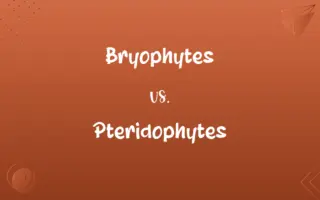Prokaryotic DNA vs. Eukaryotic DNA: Know the Difference

By Shumaila Saeed || Updated on December 25, 2023
Prokaryotic DNA is circular and located in the cytoplasm, while eukaryotic DNA is linear and enclosed within a nucleus.

Key Differences
Prokaryotic DNA, found in organisms like bacteria, is typically a single, circular chromosome located in the cytoplasm. In contrast, eukaryotic DNA, present in organisms like plants and animals, consists of multiple linear chromosomes housed in a nucleus.
Shumaila Saeed
Dec 15, 2023
The organization of prokaryotic DNA is relatively simple, lacking histones and a nucleus. Eukaryotic DNA, however, is complexly organized, wrapped around histones and contained within a nuclear membrane.
Shumaila Saeed
Dec 15, 2023
Prokaryotic DNA often contains plasmids, small, circular DNA fragments that can replicate independently. Eukaryotic DNA does not usually contain plasmids but has other complex elements like introns and exons.
Shumaila Saeed
Dec 15, 2023
In terms of replication, prokaryotic DNA replication is typically faster and less regulated than eukaryotic DNA replication, which involves multiple checkpoints and a more elaborate mechanism.
Shumaila Saeed
Dec 15, 2023
Prokaryotic DNA is directly involved in cellular processes like transcription and translation due to its proximity in the cytoplasm. Eukaryotic DNA undergoes these processes within the nucleus, and its RNA products are then transported to the cytoplasm.
Shumaila Saeed
Dec 15, 2023
ADVERTISEMENT
Comparison Chart
Chromosome Structure
Single, circular chromosome
Multiple, linear chromosomes
Shumaila Saeed
Dec 15, 2023
DNA Organization
Lacks histones, simpler organization
Complex organization with histones
Shumaila Saeed
Dec 15, 2023
Replication Process
Faster, simpler replication process
Slower, more regulated replication process
Shumaila Saeed
Dec 15, 2023
ADVERTISEMENT
Involvement in Cellular Processes
Direct involvement in transcription and translation
RNA products transported from nucleus to cytoplasm
Shumaila Saeed
Dec 15, 2023
Genetic Complexity
Generally less genetic complexity
Higher genetic complexity
Shumaila Saeed
Dec 15, 2023
Gene Density
High gene density, less non-coding DNA
Lower gene density, more non-coding DNA
Shumaila Saeed
Dec 15, 2023
Regulatory Sequences
Fewer regulatory sequences
Numerous regulatory sequences
Shumaila Saeed
Dec 15, 2023
Impact on Cellular Functions
Direct impact due to lack of compartmentalization
Compartmentalized functions, indirect impact
Shumaila Saeed
Dec 15, 2023
ADVERTISEMENT
Prokaryotic DNA and Eukaryotic DNA Definitions
Prokaryotic DNA
A single, circular chromosome forming the genome of prokaryotes.
Prokaryotic DNA replication is crucial for bacterial reproduction.
Shumaila Saeed
Dec 03, 2023
Eukaryotic DNA
Wrapped around histones, forming a compact and organized structure.
The packaging of eukaryotic DNA into chromatin is essential for gene regulation.
Shumaila Saeed
Dec 03, 2023
Prokaryotic DNA
The genetic material of prokaryotic organisms, typically circular and located in the cytoplasm.
Prokaryotic DNA in bacteria is essential for their rapid adaptation to environmental changes.
Shumaila Saeed
Dec 03, 2023
Eukaryotic DNA
Comprises a large genome with introns and exons in a complex arrangement.
Genetic disorders often arise from mutations in eukaryotic DNA.
Shumaila Saeed
Dec 03, 2023
Prokaryotic DNA
Directly involved in cellular processes due to its location in the cytoplasm.
Prokaryotic DNA is immediately accessible for protein synthesis.
Shumaila Saeed
Dec 03, 2023
Eukaryotic DNA
The genetic material in eukaryotic cells, organized into multiple linear chromosomes within a nucleus.
Eukaryotic DNA in human cells is complexly structured and tightly regulated.
Shumaila Saeed
Dec 03, 2023
Prokaryotic DNA
Contains genes and regulatory sequences necessary for prokaryotic life.
Antibiotic resistance often arises from mutations in prokaryotic DNA.
Shumaila Saeed
Dec 03, 2023
Eukaryotic DNA
Separation from cytoplasmic processes due to nuclear compartmentalization.
Transcription of eukaryotic DNA occurs in the nucleus, while translation occurs in the cytoplasm.
Shumaila Saeed
Dec 03, 2023
Prokaryotic DNA
Often includes plasmids, small, independently replicating DNA molecules.
Plasmids in prokaryotic DNA can be transferred between bacteria.
Shumaila Saeed
Dec 03, 2023
Eukaryotic DNA
Undergoes intricate replication and repair processes in the nucleus.
Cancer can result from errors in eukaryotic DNA replication.
Shumaila Saeed
Dec 03, 2023
Repeatedly Asked Queries
What defines prokaryotic DNA?
Prokaryotic DNA is characterized by its simple, circular structure and location in the cytoplasm.
Shumaila Saeed
Dec 15, 2023
Does prokaryotic DNA contain histones?
No, prokaryotic DNA generally does not contain histones.
Shumaila Saeed
Dec 15, 2023
How does prokaryotic DNA replication compare to eukaryotic?
Prokaryotic DNA replication is typically faster and simpler than eukaryotic DNA replication.
Shumaila Saeed
Dec 15, 2023
What characterizes eukaryotic DNA?
Eukaryotic DNA is characterized by its linear chromosomes, complex organization, and location within a nucleus.
Shumaila Saeed
Dec 15, 2023
Where is prokaryotic DNA found?
Prokaryotic DNA is found in the cytoplasm of prokaryotic cells like bacteria.
Shumaila Saeed
Dec 15, 2023
Are plasmids a part of prokaryotic DNA?
Yes, plasmids are small, circular DNA molecules that can exist in prokaryotic cells alongside the main DNA.
Shumaila Saeed
Dec 15, 2023
Where is eukaryotic DNA located?
Eukaryotic DNA is located within the cell nucleus.
Shumaila Saeed
Dec 15, 2023
Are introns present in eukaryotic DNA?
Yes, introns are non-coding sequences present in eukaryotic DNA.
Shumaila Saeed
Dec 15, 2023
Can prokaryotic DNA undergo genetic recombination?
Yes, prokaryotic DNA can undergo genetic recombination, often through mechanisms like conjugation.
Shumaila Saeed
Dec 15, 2023
Are there non-coding regions in eukaryotic DNA?
Yes, eukaryotic DNA contains many non-coding regions, including introns and regulatory sequences.
Shumaila Saeed
Dec 15, 2023
What role do histones play in eukaryotic DNA?
Histones in eukaryotic DNA help in organizing and compacting the DNA, and also play a role in gene regulation.
Shumaila Saeed
Dec 15, 2023
Does eukaryotic DNA contain histones?
Yes, eukaryotic DNA is associated with histones to form chromatin.
Shumaila Saeed
Dec 15, 2023
Is eukaryotic DNA more complex than prokaryotic DNA?
Yes, eukaryotic DNA is generally more complex, with more regulatory elements and a larger genome.
Shumaila Saeed
Dec 15, 2023
Are mutations in prokaryotic DNA and eukaryotic DNA handled differently?
Yes, due to differences in DNA repair mechanisms and complexities, mutations are handled differently in prokaryotic and eukaryotic DNA.
Shumaila Saeed
Dec 15, 2023
How does eukaryotic DNA replication differ from prokaryotic?
Eukaryotic DNA replication is more complex, involves more proteins, and occurs in the nucleus.
Shumaila Saeed
Dec 15, 2023
How is gene expression regulated in prokaryotic DNA?
Gene expression in prokaryotic DNA is regulated through simple mechanisms like operons.
Shumaila Saeed
Dec 15, 2023
Does the circular nature of prokaryotic DNA have advantages?
The circular nature of prokaryotic DNA aids in efficient replication and can be advantageous for rapid cellular division.
Shumaila Saeed
Dec 15, 2023
How does the structure of prokaryotic DNA affect its function?
The simple structure of prokaryotic DNA allows for quick replication and direct involvement in cellular processes.
Shumaila Saeed
Dec 15, 2023
How does nuclear compartmentalization affect eukaryotic DNA function?
Nuclear compartmentalization in eukaryotes allows for more regulated and complex control of DNA replication and gene expression.
Shumaila Saeed
Dec 15, 2023
Do both prokaryotic and eukaryotic DNA code for proteins?
Yes, both prokaryotic and eukaryotic DNA contain genes that code for proteins.
Shumaila Saeed
Dec 15, 2023
Share this page
Link for your blog / website
HTML
Link to share via messenger
About Author
Written by
Shumaila SaeedShumaila Saeed, an expert content creator with 6 years of experience, specializes in distilling complex topics into easily digestible comparisons, shining a light on the nuances that both inform and educate readers with clarity and accuracy.








































































